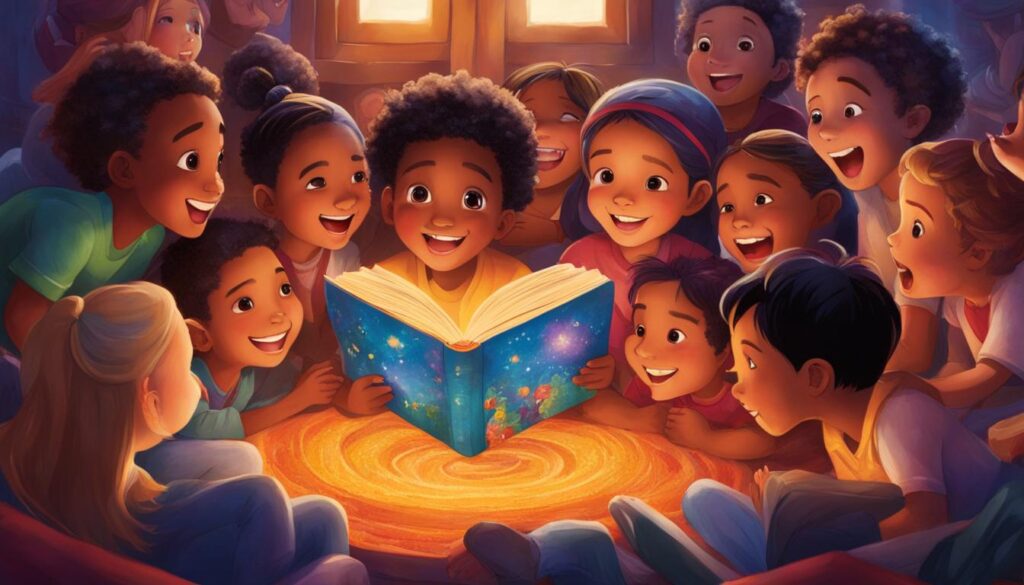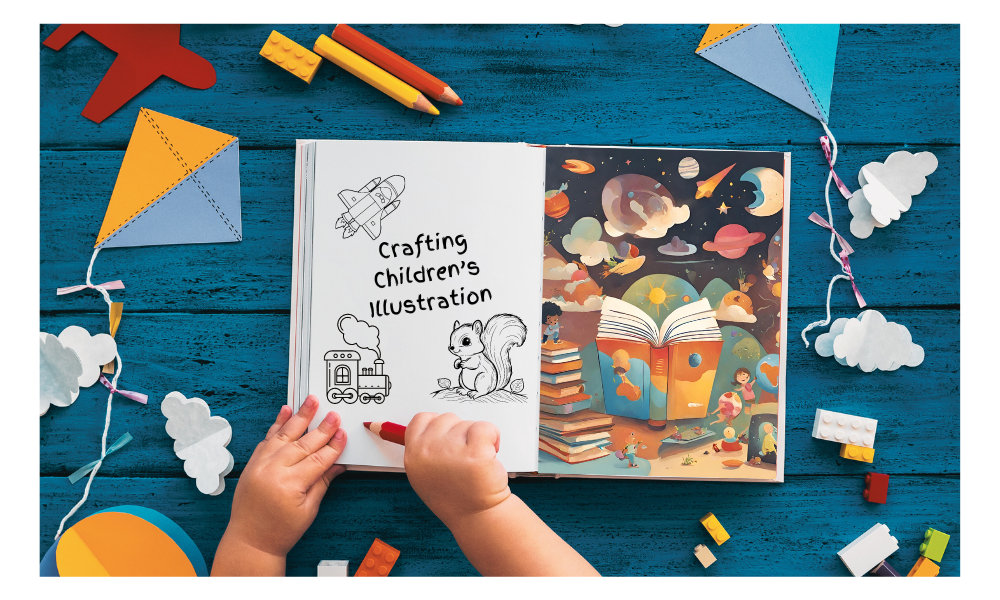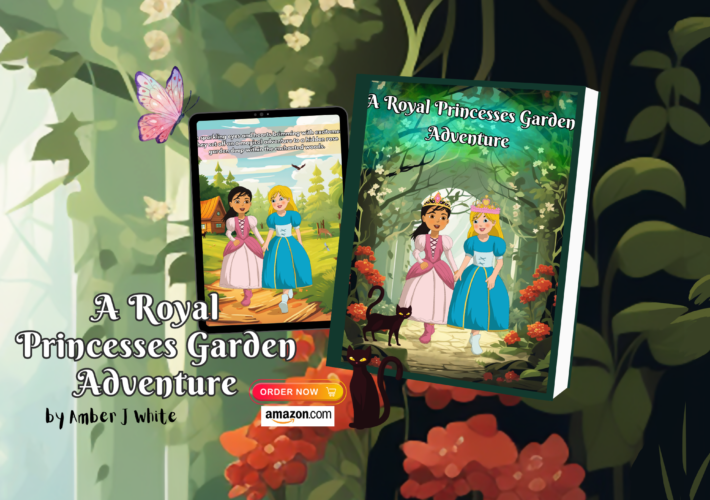Creating a children’s picture book is a delightful endeavor that allows me to transport young readers to magical worlds and impart valuable life lessons through the power of storytelling. Before embarking on this journey, it’s crucial to determine your target audience, brainstorm story ideas, and create relatable characters. The book’s title should be memorable and reflective of the story’s essence. The text should be age-appropriate, and the illustrations should bring the story to life. Pay attention to layout, design, and the editing process. Finally, test the book with your intended audience and explore publishing options, such as self-publishing or traditional publishing houses.
Key Takeaways:
- Writing a children’s book requires careful consideration of the target audience and age-appropriate content.
- Brainstorm story ideas that convey meaningful messages and develop relatable characters.
- Create a compelling narrative with a well-structured plot that balances simplicity and depth.
- Design a memorable book title that captures the essence of the story.
- Bring the characters to life through captivating illustrations that complement the text.
By following these steps, you can craft a captivating children’s illustration book that engages young readers and sparks their imagination. Embrace the magic of storytelling and watch your book come to life!
Determining Your Target Audience
Before embarking on the journey of writing a children’s book, it is crucial to determine your target audience. Understanding the age group you want to reach will greatly influence your writing style, vocabulary, and the content you create. Children’s picture books are designed to cater to various age ranges, from infants to pre-teens, so it’s essential to craft your book with the specific needs and interests of your target audience in mind.
When writing for children, it is important to strike a balance. While young readers appreciate stories that are entertaining and engaging, they also value depth and authenticity. To capture their attention and create a meaningful impact, ensure that your book not only entertains but also imparts valuable lessons and sparks their imagination.
Developing age-appropriate content is crucial to keeping young readers engaged and ensuring they can comprehend and appreciate the story. Take into account the language skills, cognitive abilities, and emotional development of your target audience when crafting your narrative. Strive to strike a balance between simplicity and complexity, fostering a sense of wonder and curiosity while ensuring the story remains accessible and relatable.
By truly understanding your target audience and tailoring your writing style, vocabulary, and content to their specific needs, you can create a children’s book that resonates with young readers and leaves a lasting impression.
Emphasize the Importance of Age-Appropriate Content
One of the key elements of creating a successful children’s book is crafting age-appropriate content. Young readers are at different developmental stages, and it is essential to match the complexity of your story to their cognitive abilities. Pay attention to the vocabulary you use, sentence structure, and the themes you explore. Balancing simplicity and complexity ensures that your book not only captures their attention but also nurtures their growth and understanding.
“Children’s books have the power to shape young minds, and that’s why it’s crucial to consider the age-appropriateness of the content. As authors, we have a responsibility to provide engaging, meaningful, and developmentally suitable stories that contribute to a child’s cognitive, emotional, and moral development.”
Understanding Your Young Readers
Children’s book target audiences vary across different ages, and it’s important to understand the particular characteristics and interests of each group. For infants and toddlers, books with simple illustrations and repetitive text can enhance their language development and sensory perception. Preschoolers and early readers enjoy stories with relatable characters and simple plots that promote imagination and emotional growth.
As children grow older, their interests and cognitive abilities evolve. Middle-grade readers appreciate more complex narratives, diverse characters, and themes that explore identity, friendship, and overcoming challenges. Tailoring your writing style to suit the specific age group you want to engage will greatly enhance the appeal and impact of your book.
Understanding your target audience is the foundation of creating a successful children’s book. By catering to their needs, interests, and developmental stages, you can craft a story that captivates their hearts and minds, leaving a positive and lasting impression.
Brainstorming Story Ideas
When it comes to creating a captivating children’s book, the story is everything. Brainstorming unique and engaging ideas is the foundation of a successful book that will capture the imagination of young readers. In this section, I’ll guide you through the process of generating children’s book ideas, developing a compelling story theme, and crafting relatable characters that resonate with your audience.
One of the first steps in brainstorming story ideas is to think about the message or theme you want to convey to your young readers. Consider what lessons or values you want to impart through your storytelling. These themes can be drawn from personal experiences, childhood memories, or observations of the world around you. By reflecting on your own experiences and tapping into universal emotions, you can create stories that resonate with children on a deeper level.
As you develop your story theme, it’s important to focus on creating relatable characters. Characters that children can connect with on an emotional level will make your story more engaging and memorable. Think about unique qualities, challenges, and aspirations for each character. Each character should serve a purpose in the story and contribute to its overall message.
For example, imagine a story about a young girl named Lily who is afraid of the dark. Through her journey, she learns to overcome her fears and discovers the magic and beauty that can be found in the night. By creating a relatable character like Lily, children who share the same fear can see themselves in her and feel empowered to face their own fears.
“Stories are a powerful means of helping children navigate the world around them. By creating relatable characters, we can inspire and encourage young readers to overcome challenges and embrace their own strengths and uniqueness.”
Remember, the goal is to create characters and stories that children can easily relate to and find inspiration in. By brainstorming story ideas with a focus on relatability and a compelling theme, you can craft a children’s book that will capture the hearts and imaginations of your young readers.
Continue reading to learn more about crafting a compelling narrative for your children’s book in the following section.
Crafting a Compelling Narrative
A compelling narrative is the heart of any great children’s picture book. It captures the imagination of young readers and keeps them engaged from beginning to end. To create an impactful story, focus on developing a well-structured plot that unfolds in a captivating way.
Start by outlining the key events or milestones that will drive your story forward. Ensure that each event contributes to the overall development of the plot and helps to further the story’s central theme or message. A clear story arc not only keeps readers interested but also helps to create a sense of anticipation and resolution.
Finding the Right Balance
When crafting a narrative for children, it’s important to strike a balance between simplicity and depth. While children may have limited vocabularies, they have a remarkable ability to grasp complex ideas and emotions.
Use age-appropriate language and avoid overwhelming young readers with intricate concepts. Instead, focus on presenting ideas in a relatable and accessible manner. Incorporate simple metaphors or analogies to illustrate abstract concepts and make them more understandable.
Creating Relatable Characters and Authentic Emotions
Children appreciate stories with characters they can identify with. Develop relatable protagonists who face challenges, make choices, and overcome obstacles. By doing so, you’ll capture the hearts of young readers and encourage empathy and emotional connection.
When portraying emotions in your story, ensure that they are genuine and authentic. Children can spot forced or exaggerated emotions from a mile away. Use descriptive language and vivid imagery to convey the characters’ feelings, allowing young readers to experience the emotions alongside them.
“The true magic of a children’s book lies in its ability to transport young readers into a world filled with wonder, imagination, and life lessons.”
By crafting a well-structured plot, using age-appropriate language, and creating relatable characters with authentic emotions, you can create a compelling narrative that resonates with young readers. Remember, a captivating story holds the power to inspire, educate, and entertain children for generations to come.

Designing a Memorable Book Title
The book’s title is its first impression, so it plays a crucial role in captivating potential readers. A memorable book title not only grabs attention but also reflects the essence of the story within. As an author of a children’s book, it is imperative to choose a title that piques the curiosity of both children and parents while providing a glimpse into the book’s content.
When brainstorming for a title, consider using catchy phrases, alliteration, or words that evoke emotion and intrigue. A well-chosen title can attract readers and make your book stand out on the shelves. Remember, children’s book titles should be age-appropriate, captivating, and easy to remember.
Importance of a Memorable Book Title
A memorable book title not only captures the attention of potential readers but also sets the tone for the entire reading experience. It serves as a bridge between the story and the reader, acting as a preview of the adventure that awaits within the pages. A strong title can evoke emotions, spark curiosity, and leave a lasting impression in the minds of both children and parents.
“The title of a children’s book is like a key that unlocks the imagination of young readers. It’s the first clue they have about what awaits them on their literary journey.” – Jane Smith, Award-Winning Children’s Author
Children’s book titles should strike a delicate balance between uniqueness and familiarity. While it’s essential to stand out from the crowd, readers also appreciate titles that are relatable and easy to remember. A memorable title has the power to leave a lasting impact and make your book irresistible to its target audience.
Tips for Designing a Memorable Book Title
Designing a memorable book title requires careful consideration and creativity. Here are a few tips to help you craft a title that leaves a lasting impression:
- Reflect the essence of the story: Your title should provide a glimpse into the book’s content and convey its overall theme or message.
- Use catchy phrases or alliteration: Play with words and explore catchy phrases or alliteration to make your title more engaging and memorable.
- Evoke emotion or intrigue: Consider using words and phrases that evoke emotion or spark curiosity, drawing readers into the story.
- Keep it age-appropriate: Ensure that your title resonates with the target age group, using language and themes that are suitable for young readers.
Investing time and effort into designing a memorable book title is crucial for capturing the attention of potential readers. A well-crafted title acts as a gateway to your story, enticing readers to embark on an unforgettable adventure between the covers.
So, let your creativity soar and choose a title that not only captivates but also embraces the heart of your children’s book.
Bringing Characters to Life through Illustrations
Picture books are a visual medium, where the magic of storytelling comes to life through captivating illustrations. The role of illustrations is pivotal in conveying the story and engaging young readers. Every brushstroke and color choice adds depth and emotion to the words on the page.
When it comes to creating children’s book illustrations, you have two options: hiring an illustrator or exploring resources like the Atmosphere Press Illustration Package. Hiring an illustrator allows you to collaborate with a professional who can bring your vision to reality. They can help you create characters with unique personalities, develop eye-catching settings, and establish an overall art style that complements your story. Working closely with an illustrator ensures that the visuals enhance the reading experience and captivate your audience.
During the collaboration, discuss your character designs, their expressions, and body language. Consider how these aspects can convey emotions and connect with your young readers. Each illustration should contribute to the story’s visual storytelling, making the book come alive page after page.
Collaboration with the illustrator
Collaboration with the illustrator is a vital part of the illustration process. Together, you can ensure that the illustrations align with your storytelling goals and capture the essence of your characters. Share your thoughts and provide references to guide the illustrator in understanding your vision. Regular communication during the illustration process helps maintain a shared understanding of the desired outcome.
The visual elements should complement the text, harmonizing the narrative and illustrations in perfect synergy. Each illustration should enhance the story, adding another layer of depth and engagement for your readers. Remember, visual storytelling is an integral part of children’s books and can turn a good story into an unforgettable experience.
Visual Appeal and Accessibility
Consider the age group of your target audience when designing the illustrations. Younger children may benefit from bold, vibrant colors and simple shapes, while older children might appreciate more intricate details and realistic illustrations. It’s crucial to strike a balance between visual appeal and accessibility, ensuring that the illustrations capture the imagination of your readers without overwhelming them.
“Illustrations are not just about artistic expression; they are an integral part of the reading experience for children.”
The Impact of Illustrations
Children’s book illustrations have a profound effect on readers. They provide visual cues that support comprehension and enhance the emotional connection to the story. Illustrations can spark curiosity, imagination, and empathy, making children’s books a powerful tool for learning and growth.
In conclusion, don’t underestimate the power of children’s book illustrations. Collaborating with a talented illustrator ensures that your story is visually captivating, complementing the text and bringing your characters to life. Remember, visual storytelling is an essential part of creating a remarkable children’s book.
Designing Layout and Book Design
When it comes to creating a captivating children’s book, the layout and design are essential elements that can greatly enhance the reading experience. Effective book design ensures that young readers are engaged and immersed in the story from start to finish.
Font choice: One of the key considerations in book design is choosing the right font. Opt for a clear and legible font that is easy for young readers to follow along. Avoid overly decorative or elaborate fonts that may result in readability issues.
Text placement: The placement of the text within the book plays a crucial role in guiding young readers through the story. Ensure that the text is appropriately sized and well-spaced, making it easy to read. Consider utilizing different text placements, such as varying font sizes for emphasis or utilizing text boxes for important dialogues or asides.
Image alignment: Illustrations are an integral part of children’s books, providing visual cues that complement the story. Carefully align the images with the corresponding text to create a seamless narrative flow. Images should be strategically placed to enhance understanding and capture attention.
Creating a visual journey
The layout of a children’s book should guide young readers on a visual journey that seamlessly integrates text and illustrations. Use deliberate spacing, consider page turns, and create dynamic compositions to enhance the storytelling experience. A well-designed book will not only captivate young readers but also encourage a love for reading and exploration.
“Design is a key aspect of engaging young readers, as it creates an immersive experience that keeps them engaged and excited.”
By paying attention to children’s book layout, book design, font choice, text placement, and image alignment, you can create a visually appealing and engaging book that captures the hearts and imaginations of young readers. Design elements that match the tone and style of your story will make your book stand out on shelves and leave a lasting impression on your readers.
Continue reading to discover the crucial step of editing and revising your book to ensure its perfection.
Editing and Revising Your Book
Once you’ve written the initial draft of your children’s book, the real magic begins with the editing and revision process. This stage allows you to polish your story and ensure it captivates young readers. Taking the time to review your text for clarity, grammar, and consistency is essential.
Through editing, you can refine your language to ensure it is age-appropriate and engaging. Consider the vocabulary and sentence structure that best resonates with your target audience. Use the feedback from readers to gauge their understanding, and make adjustments to strengthen your storytelling.
“Editing is like sculpting. You chip away the excess until you reveal the beauty within.”
One effective approach is seeking feedback from others, particularly children within your intended age group. Their honest opinions will provide valuable insights into what resonates with young readers. Consider organizing focus groups or sharing your manuscript with young relatives or local schools to gather diverse perspectives.
As you receive feedback, be open to constructive criticism and incorporate suggestions for improvement. This iterative process will help refine your story and ensure it captures the hearts and imaginations of your young audience.
While editing, pay attention to the narrative flow, character development, and story pacing. Ensure each chapter or section connects seamlessly, and the plot unfolds in an engaging manner. Use your editing process to fine-tune the scenes, dialogue, and overarching story structure.
Remember, editing and revision are crucial steps in creating a children’s book that leaves a lasting impression. Just like a craftsman perfects their creation, you too can chisel away any imperfections and reveal the true beauty of your story.
Steps for Editing and Revising Your Children’s Book:
- Review the text for clarity, grammar, and consistency.
- Ensure the language is age-appropriate and engaging.
- Seek feedback from children within your target age group.
- Incorporate constructive suggestions for improvement.
- Pay attention to narrative flow, character development, and story pacing.
- Fine-tune scenes, dialogue, and the overall story structure.
Testing and Fine-Tuning Your Book
Before publishing your children’s book, it’s crucial to test it with your target audience and gather valuable feedback to make necessary adjustments. This step is essential in fine-tuning your book and ensuring that it resonates with young readers.
One of the best ways to gather feedback is by sharing your book with children and their parents. Encourage them to provide honest opinions about the story, characters, and overall experience. Take note of any concerns or issues that may arise during this testing phase.
Consider hosting focus groups where you can observe how children engage with your book. Ask specific questions about their favorite parts, what they learned, and if there are any confusing elements. This direct interaction can provide valuable insights and help you make improvements.
Professional feedback can also be invaluable in refining your book. Seek input from educators, librarians, and other professionals in the children’s book industry. Their expertise can provide a fresh perspective and guide you in creating a captivating and educational experience for young readers.
Once you’ve gathered feedback, take the necessary steps to make adjustments to your book. This could involve revising the text, refining the illustrations, or even reconsidering certain story elements. The goal is to enhance the overall quality and impact of your book.
Remember, testing and fine-tuning your children’s book is an iterative process. Embrace the feedback you receive and view it as an opportunity to make your book even better. By incorporating suggestions and addressing any concerns, you’ll create a final product that is immersive, engaging, and resonates with your intended audience.
Feedback is Key
Testing your children’s book allows you to gather valuable feedback and ensure that your story resonates with young readers. Embrace the feedback you receive and use it to make necessary adjustments that will enhance the overall quality of your book.
Exploring Publishing Options and Conclusion
Now that your children’s book is polished and ready, it’s time to consider the various publishing options available to you. Two popular routes to consider are traditional publishing houses and self-publishing. Traditional publishing involves submitting your manuscript to established publishing houses, who handle the editing, design, printing, and distribution of your book. This route may be more challenging to break into, but it offers the benefit of professional expertise and wider distribution channels.
On the other hand, self-publishing allows you to retain full control over the publishing process. With self-publishing, you can choose to work with online platforms such as Amazon Kindle Direct Publishing (KDP) or IngramSpark. These platforms provide tools and resources to help you publish your book independently. Self-publishing offers greater creative freedom and higher royalties, but it also requires more self-promotion and marketing efforts on your part.
Another option to consider is hybrid publishing, such as Atmosphere Press. Hybrid publishing combines the benefits of traditional publishing and self-publishing. With Atmosphere Press, for example, you can retain creative control while benefiting from professional editing, design, and distribution services. This can be a good option for authors who want a more hands-on approach to publishing but still desire support and guidance along the way.
Regardless of which publishing route you choose, book promotion is key to reaching your target audience. Utilize social media platforms, such as Instagram, Facebook, and Twitter, to connect with potential readers and share updates about your book. Consider organizing book signings, collaborating with libraries and schools for reading events, and reaching out to influential bloggers or book reviewers in the children’s literature niche. By proactively promoting your book, you can increase its visibility and reach more young readers, igniting their imaginations and fostering a love for reading.
Source Links
- https://atmospherepress.com/how-to-write-a-childrens-picture-book/
- https://kindlepreneur.com/how-to-write-a-childrens-book/
- https://www.clipstudio.net/how-to-draw/archives/160469
As an Amazon and Fiverr Associate I earn from qualifying purchases.





